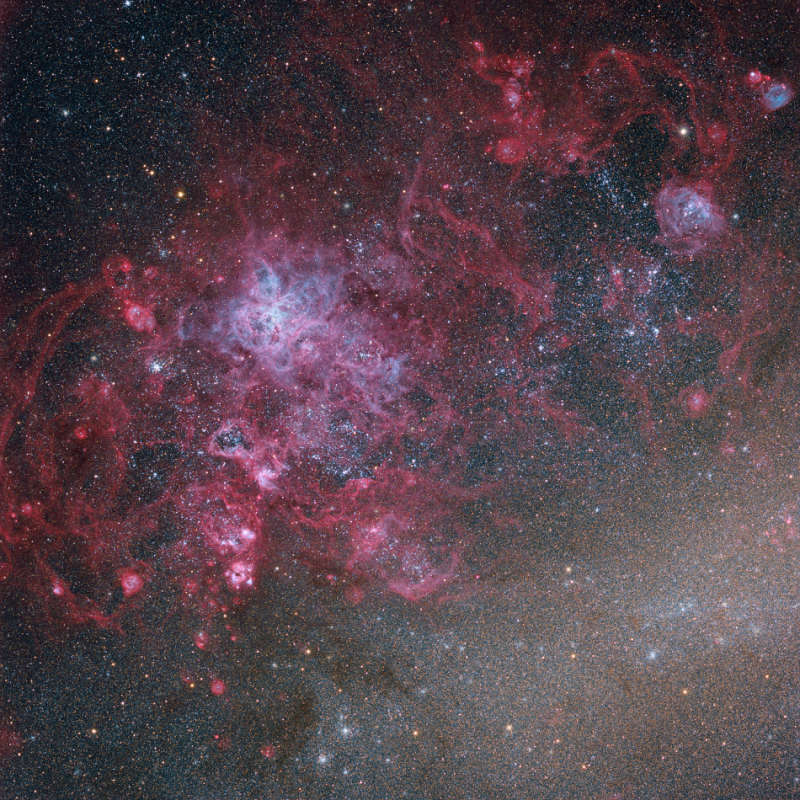
|
Credit & Copyright: Marco Lorenzi
Explanation:
The
Tarantula Nebula is more than 1,000 light-years in diameter,
a giant star forming region within our neighboring galaxy
the Large Magellanic Cloud (LMC).
That cosmic arachnid lies toward the upper left in this deep and
colorful
telescopic view made through broad-band and
narrow-band filters.
The image spans nearly 2 degrees (4 full moons) on the sky and
covers a part of the LMC over 8,000 light-years across.
Within the Tarantula (NGC 2070), intense radiation,
stellar winds and supernova shocks from the central young cluster of massive
stars, cataloged as R136,
energize the nebular glow and shape the spidery filaments.
Around the Tarantula
are other violent star-forming regions with
young star clusters, filaments, and
bubble-shaped clouds
In fact, the frame includes the
site of the closest supernova in modern times,
SN 1987A,
just above center.
The rich field of view is located in the southern
constellation
Dorado.
|
January February March April May June July August September October November December |
| |||||||||||||||||||||||||||||||||||||||||||||||||||||||
NASA Web Site Statements, Warnings, and Disclaimers
NASA Official: Jay Norris. Specific rights apply.
A service of: LHEA at NASA / GSFC
& Michigan Tech. U.
Based on Astronomy Picture
Of the Day
Publications with keywords: LMC
Publications with words: LMC
See also:
